News & Media / 10 Rules for Client-Centric Marketing in B2B Professional Services
10 Rules for Client-Centric Marketing in B2B Professional Services
10 Rules for Client-Centric Marketing in B2B Professional ServicesPublished
Aug 28, 2025
When investing in marketing efforts, professional service firms often view the investment as a ‘sunk-cost’ believing that most efforts fall flat. Websites get refreshed, and decks redesigned, but the impact on client growth is minimal.
Why? Because most firms start with themselves. Their credentials. Their services. Their expertise.
The firms that break this cycle (and the ones who consistently grow) flip the perspective. They start with clients.
We’ve seen first-hand that firms who put clients first, grow first. Here’s how leaders in professional services can embed client-centricity into their marketing strategy, with our top ten client-centric marketing rules.
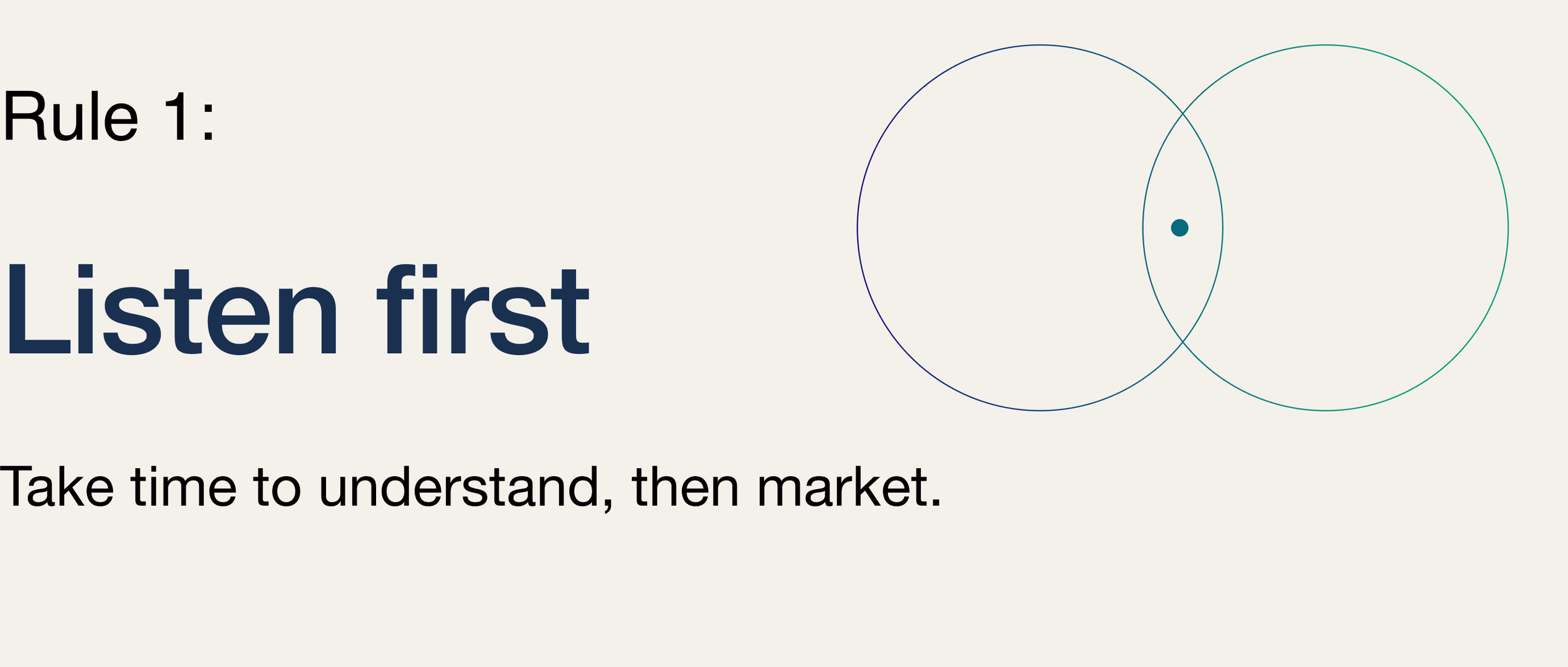
Marketing begins with understanding, not messaging. Yet many firms still guess at what their clients want.
Leader Lens: For leaders, this means prioritizing structured listening such as client interviews, advisory boards, and surveys as part of your marketing calendar.
Risk of Inaction: Without listening, you invest in marketing efforts built on assumptions and risk missing what really matters.
Action Step: Schedule three client conversations this quarter. Ask, “What’s your biggest challenge right now?”
Example: A financial advisory firm was convinced their clients wanted technical market analysis. But when they interviewed their clients directly, something else surfaced: people weren’t looking for more charts and forecasts. They wanted reassurance.
The firm shifted its content from “what the markets are doing” to “what this means for your financial wellbeing”.
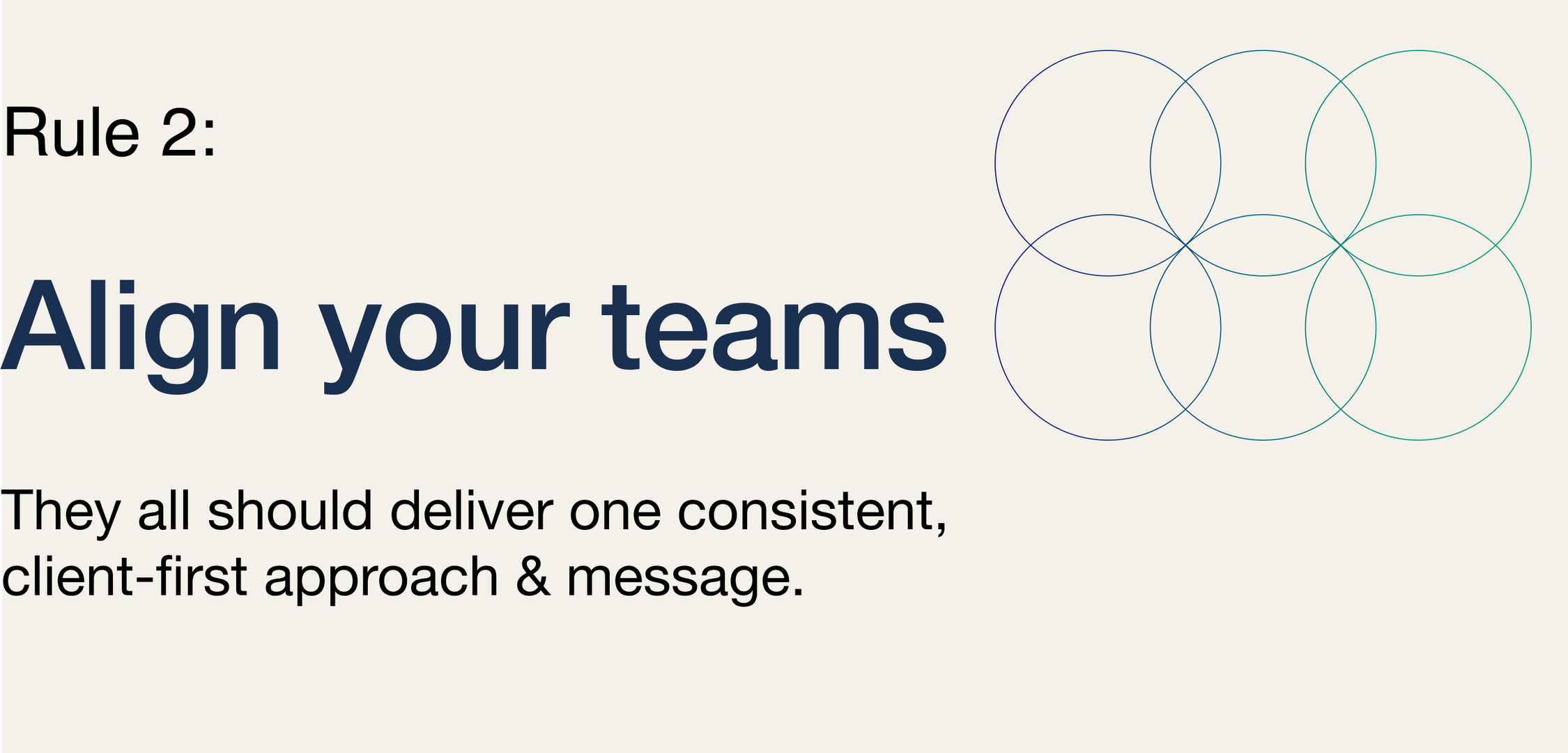
Misalignment is silent sabotage. When marketing emphasizes innovation, business development focuses on low cost, and client service prides itself on reliability, these messages create confusion for your clients, even though individually, each message makes sense.
Leader Lens: For leaders, this is about owning the narrative and ensuring consistency across all client touchpoints.
Risk of Inaction: Disjointed messages erode trust. Clients buy confidence, and inconsistency kills it.
Action Step: Audit three of your firm’s touchpoints (website, proposals, client emails). Do they tell the same story?
Example: Align your business development, marketing and client service under a single narrative that they all memorize and understand. Proposals, sales decks, website copy, even client emails must reinforce the same promise and value proposition.
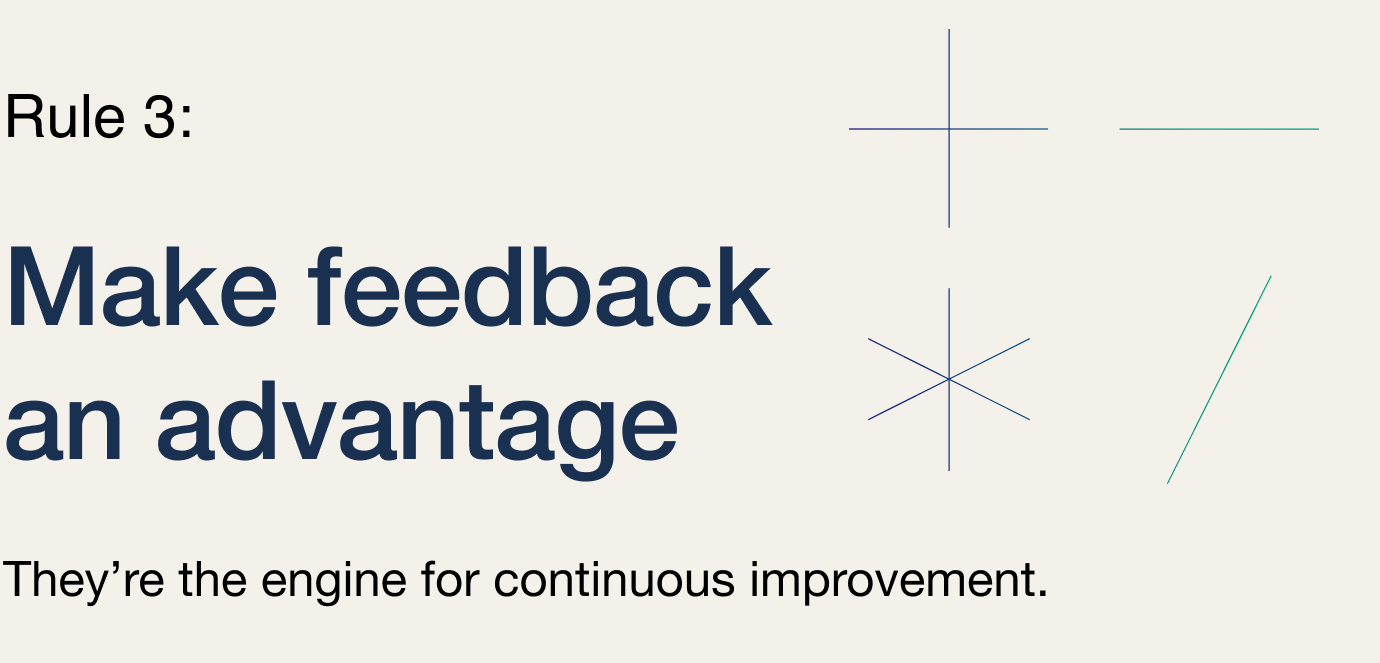
Feedback is true marketing strategy fuel.
Leader Lens: Treat feedback as a continuous loop, not a post-mortem.
Risk of Inaction: When clients don’t feel heard, they don’t complain, they leave.
Action Step: Add one simple question to every client closeout: “What could we have done better?”
Example: A boutique law firm started hosting end-of-matter debriefs with their clients, asking questions via a meeting such as “What stood out that we did well?”, “Was there an experience we could improve for you next time?” Through active listening and acting on the feedback, they introduced mid-project client update calls and restructured invoices. Not only did their client satisfaction scores rise, the referrals started coming in more frequently as well.
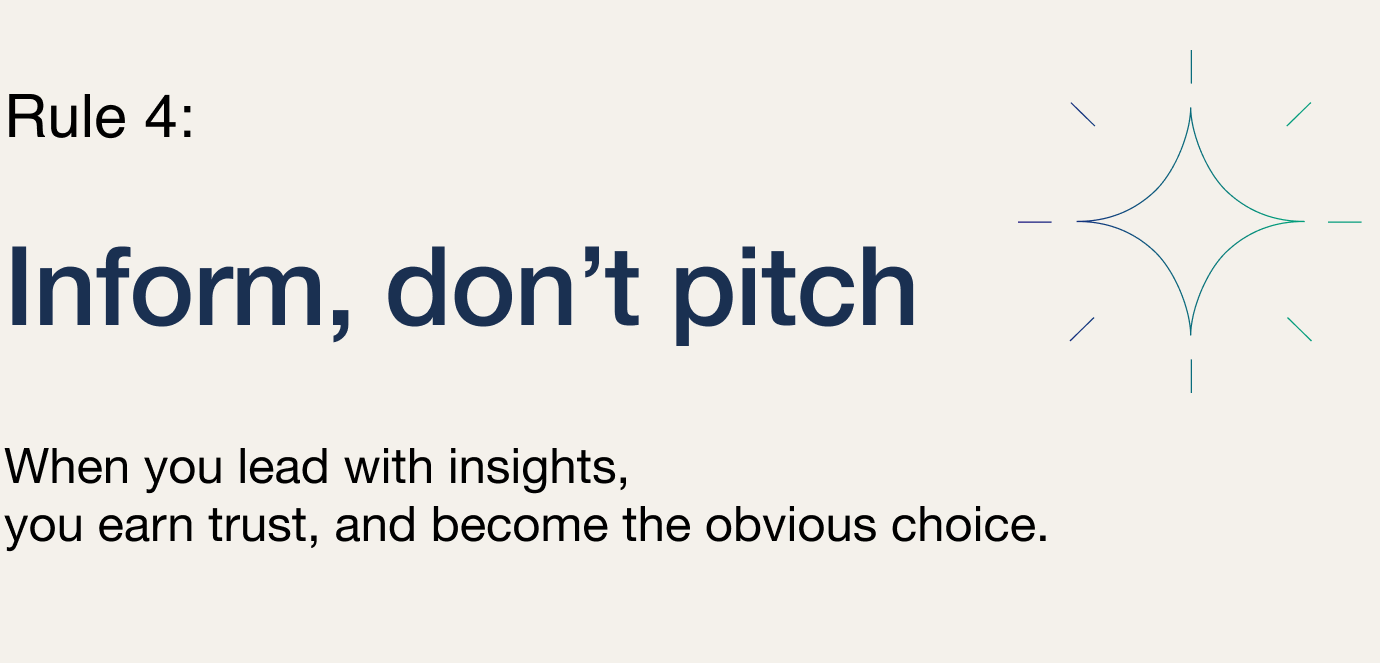
We’ve all seen the firm that shouts “Work with us!” at every opportunity. Has it ever made you feel like you wanted to learn more and potentially work with them? We dislike being pitched, we’d rather be informed and make our own decision on whether the partnership makes sense.
Leader Lens: Authority comes from education, not promotion.
Risk of Inaction: A constant sales pitch erodes credibility and ensures you’re seen as interchangeable with competitors.
Action Step: Shift one piece of marketing from a pitch to a perspective this month.
Example: One consulting client stopped sending promotional email blasts and instead started publishing “insight notes”. Short, practical reflections on market changes that were timely. They welcomed further conversations rather than mentioned their services in these insights notes. And when clients were ready to buy, they reached out.
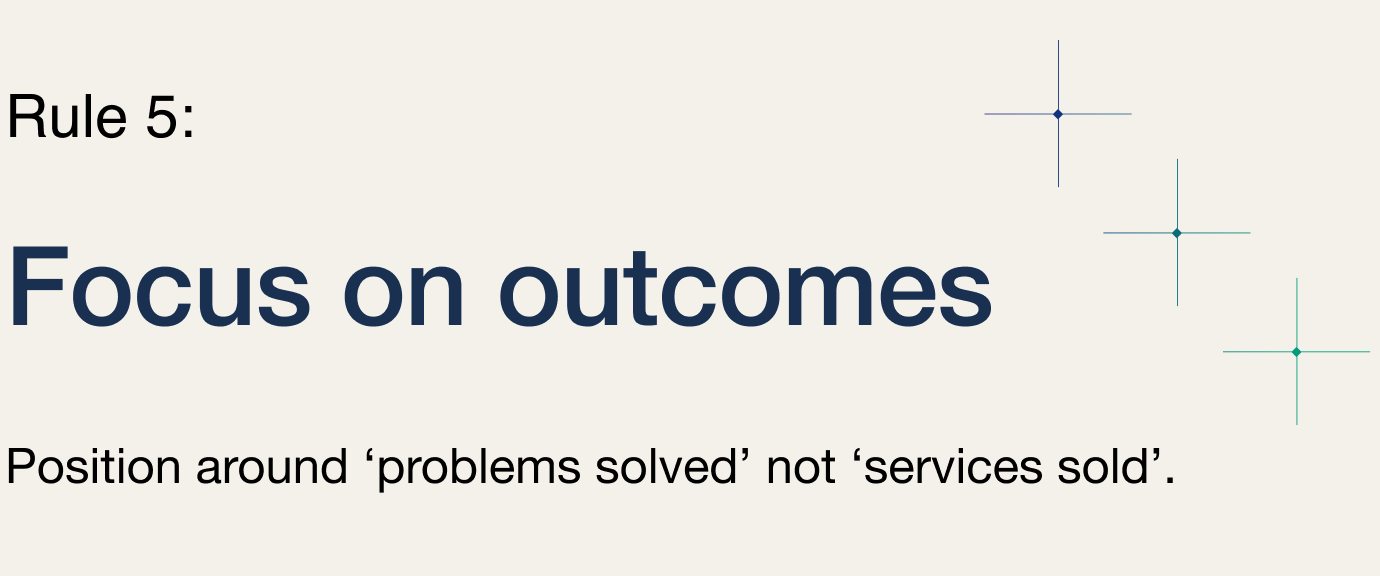
Leader Lens: Start articulating what clients achieve with you rather than describe what you do.
Risk of Inaction: Service-first messaging keeps you in the commodity box. Outcomes-first moves you into the value category.
Action Step: Rewrite one service description in terms of outcomes per week.
Example: A technology services firm once described themselves as “specialists in infrastructure optimization and digital audits.” By reframing it to: “We help you cut wasted spending and free up resources for growth”, the decision-makers leaned in. Same service, different framing, positioned around the client’s problem, not the firm’s process.
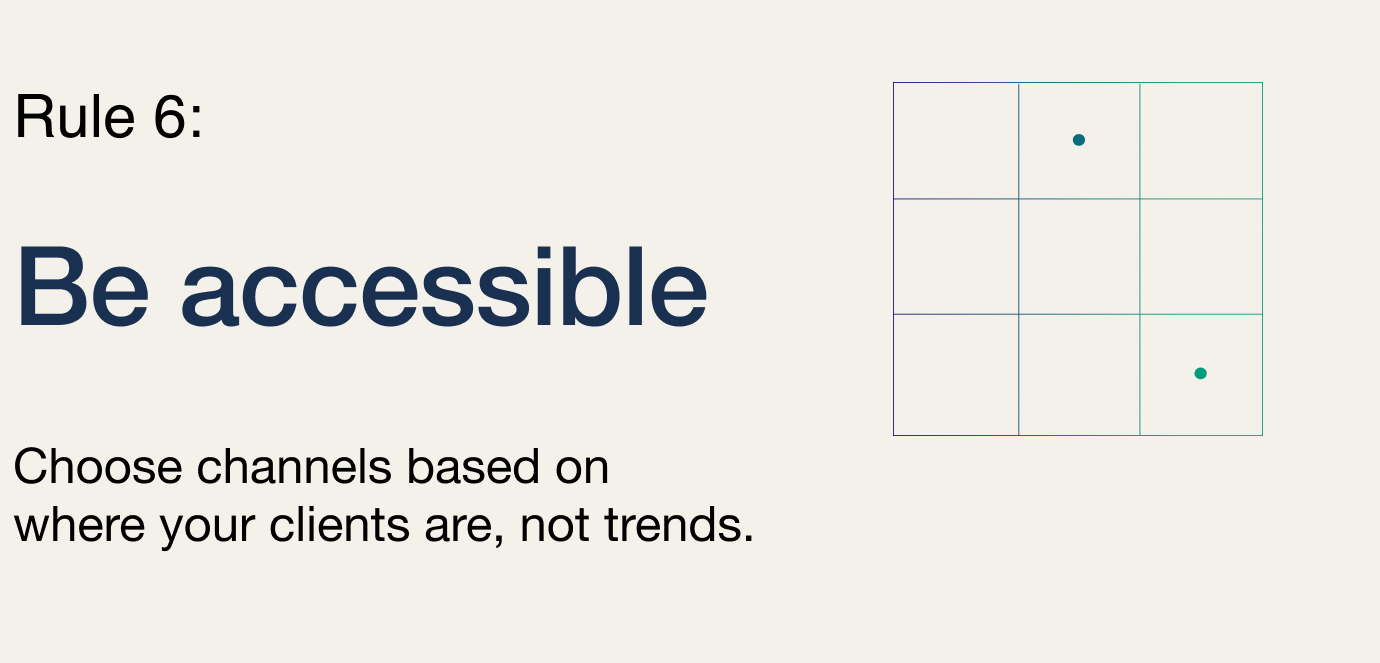
Accessibility isn’t about being everywhere. It’s about being where your clients are.
Leader Lens: Accessibility is client-driven, not trend-driven.
Risk of Inaction: Spreading thin across irrelevant channels wastes resources and misses your real audience.
Action Step: Ask clients where they prefer to consume professional content.
Example: A mid-sized investment firm insisted on pushing content through as many social channels as possible. However, their clients preferred LinkedIn and email.
Once the firm focused on where their clients actually spent some of their time, content consumption rose. Not because the content changed but because the distribution finally matched client behaviour.
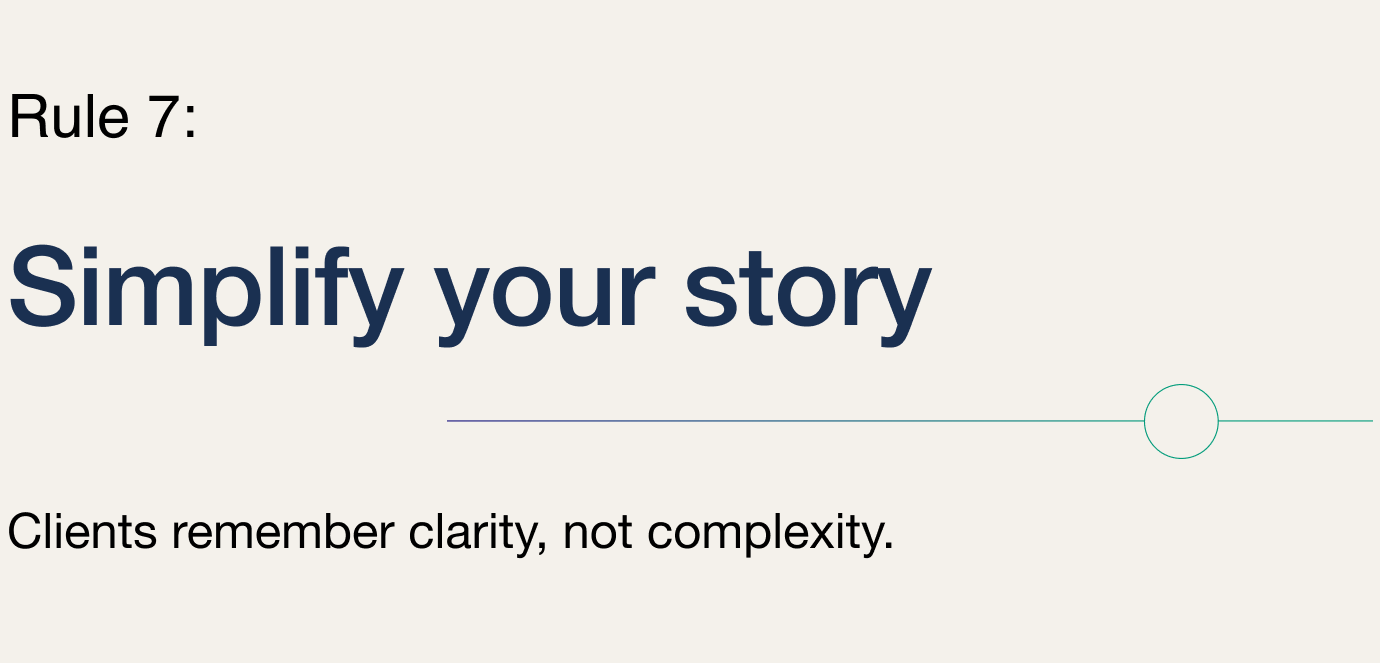
Professional service firms often confuse complexity with credibility. But clarity is what builds confidence.
Leader Lens: Simplicity is a competitive advantage.
Risk of Inaction: If clients can’t retell your story, they won’t remember it or share it with others.
Action Step: Ask three partners to describe your value in one sentence. If you get three different answers, simplify.
Example: A boutique engineering consultancy’s website was packed with technical jargon. By helping to distill their value down to a single line, prospects understood the value and benefits of working with them. And when people understand, they trust and are more likely to do business with you.
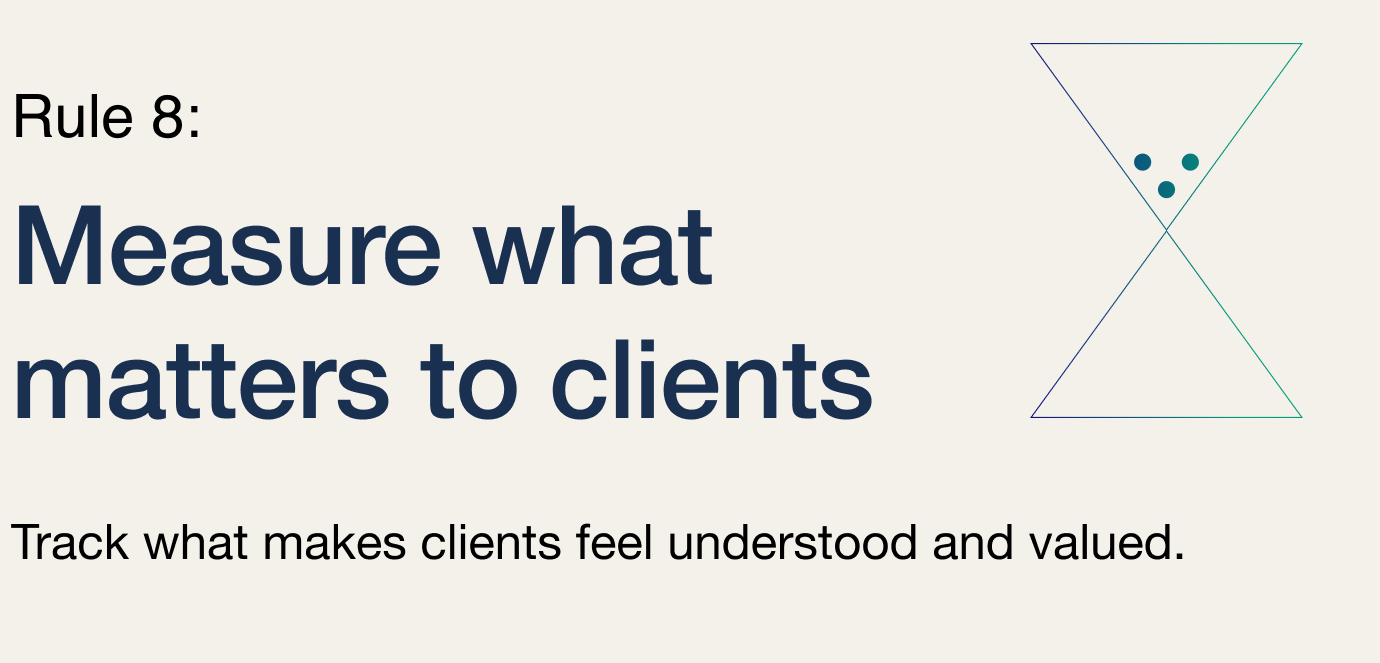
It’s easy to track ‘vanity’ metrics like impressions and clicks to make yourself feel and look good. In reality, we all know that client satisfaction is rooted in loyalty, trust, and results.
Leader Lens: What gets measured gets managed. And what gets managed should reflect client priorities.
Risk of Inaction: You’ll mistake visibility for impact and miss what truly drives growth.
Action Step: Choose one client-focused KPIs (retention, referrals) to add to your dashboard this quarter
Example: An accounting firm was proud of their thousands of impressions and clicks. Yet client retention year-after-year slipping.
By shifting their KPIs to client-focused measures (renewal rates, referral volume, and NPS), the story changed. Marketing initiatives shifted and started being judged on whether they deepened client loyalty. That shift reoriented the firm’s entire growth plan.
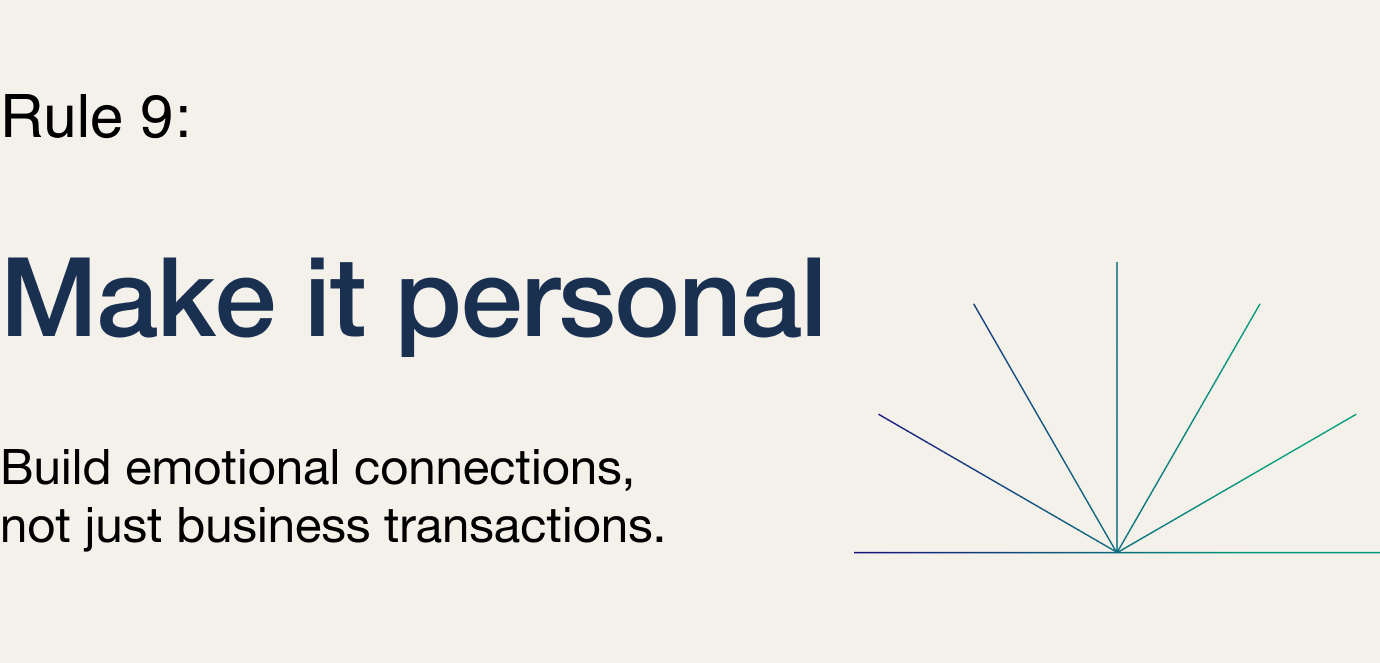
Clients don’t connect with firms. They connect with people.
Leader Lens: Relationships win over credentials.
Risk of Inaction: If you treat clients as accounts, don’t be surprised when they treat you as replaceable.
Action Step: Identify three key client milestones per year and acknowledge them personally.
Example: One of our favourite client stories came from a consulting firm that began sending personalized check-ins around key client milestones: funding rounds, product launches, leadership changes.
These weren’t sales calls, just genuine connections and their clients responded with gratitude.
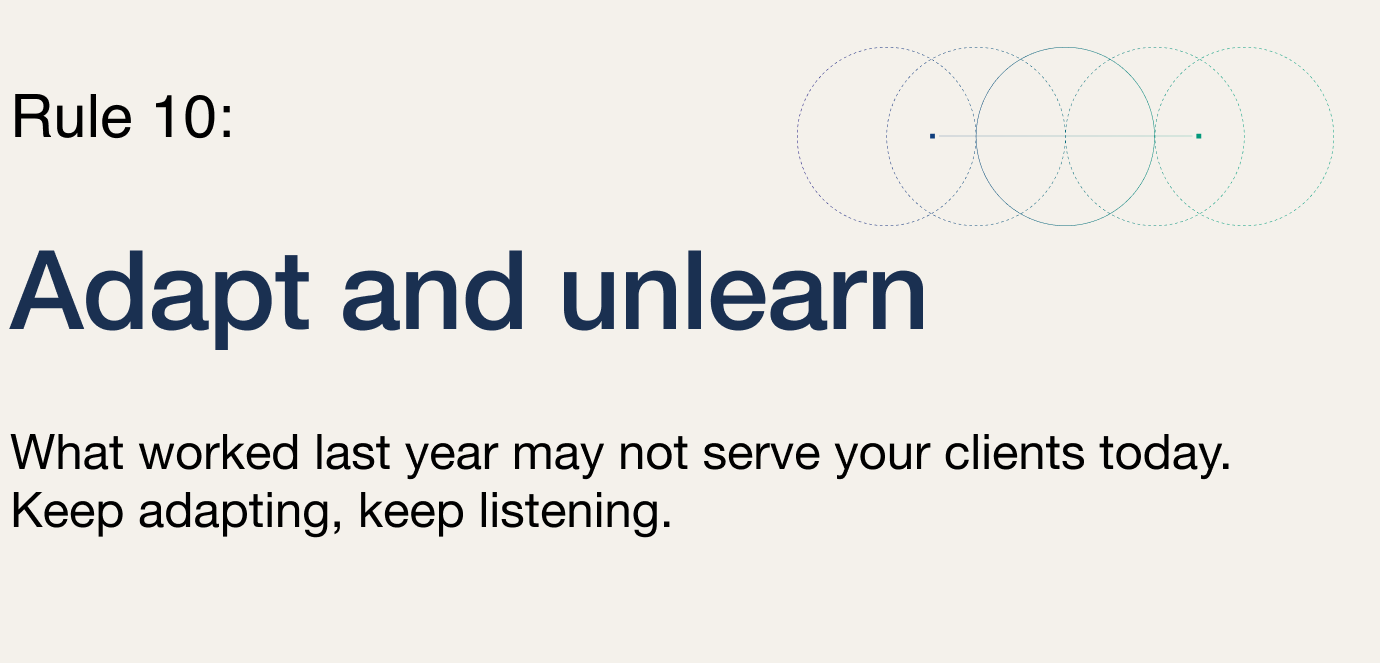
Markets change. Client expectations shift. Best practices evolve. Politics play an increasingly impactful role in buyer behaviour and environmental challenges cause concern in how we act.
Action Step: Review one “sacred cow” marketing practice. Does it still serve your clients?
Risk of Inaction: What you cling to may be exactly what loses relevance.
Leader Lens: Client-centricity isn’t static. It’s a cycle of listening, adapting, and unlearning.
Example: A financial services client realized their beloved quarterly .pdf newsletter had become background noise. Instead of forcing it, they asked clients what they’d prefer and started recording quarterly videos providing updates and answering important client questions.
From Client-First to Growth-First
Client-centric marketing strategy builds trust and deepens loyalty with your clients and prospects, adding to measurable business growth.
For leaders in professional services today, the question isn’t whether client-centricity matters, it’s
Are you willing to unlearn old habits and start with clients, every time?
Start with one rule this quarter. Track the impact. You’ll see why the firms that put clients first, grow first.
